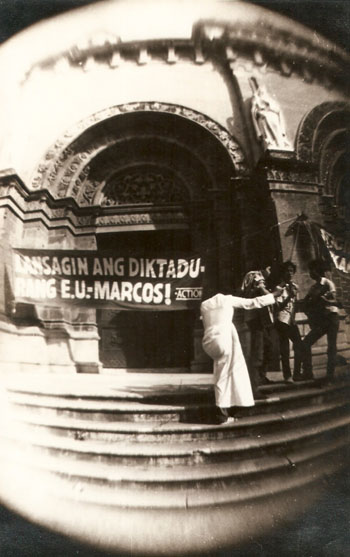Be vigilant with fact-and-fiction blended content
THE quote “A lie can travel halfway around the world while the truth is putting on his shoes” has no substantive support for assigning the saying to Mark Twain. “How delightfully ironic if true. The enemy of truth is not the outright lie, because an outright lie is easy to see and expose. One could get fooled by the half-truths where there is a blending of fact and fiction. Circulating in social media is a questionable image that was distributed at the nationwide “Caravan of Hope” for Vice President Maria Leonor “Leni” Robredo and Sen. Francis “Kiko” Pangilinan. A sticker, a snack and a 100-peso bill are shown in this image. Fact is volunteers gave stickers out. I know because I was in Metro Manila with contact from other caravans. Adding money beside the sticker is fiction. You just wonder if the person resharing the photo even bothered to ask for the source.
Then there is the news on the educational attainment of former senator Ferdinand “Bongbong” Marcos Jr. A statement from lawyer Victor Rodriguez, the chief of staff of Marcos maintained that the presidential aspirant never misrepresented his Oxford education. “We stand by the Degree confirmation which was issued by the University of Oxford. It is up to anyone to question or challenge this with the said university if they so please.” And that is what Filipino artist Ruston Banal and Rappler did. They checked with Oxford University. “According to our records, he did not complete his degree, but was awarded a Special Diploma in Social Studies in 1978,” Cathy King, private secretary to the registrar at Oxford University, replied in an email. From the email, it is clear what separates fact from fiction.
A little fact and a lot of fiction are always in the mix. One practice is to pull out a factual report from mainstream news sources and to “spin it” — giving it an entirely new meaning.
But platforms cannot detect the hybrid, the fact-and-fiction blends. I tagged a misleading video on Tiktok, and the report said it had no violations. I first spotted such a hybrid on an animated YouTube video during the 2010 campaign period. Historical and current facts blend in with the commentator’s interpretation. Cheryl Soriano and Fatima Gaw wrote an analysis on Rappler about the “Consequences of distorting Marcos’ historical legacy on YouTube.” Part of their analysis shows that “this algorithmically built network of pro-Marcos content creators not only created connections between lone, disparate YouTubers, but also constructed narratives that would otherwise sound preposterous when taken individually. Fringe claims became affirmative “evidence” when put next to each other and corroborated by multiple YouTubers under the banner of “recommendations.” Together, they legitimized this distorted historical account, manufactured emotional resonance around it, and embedded it into public consciousness through millions of views, hours and users.
Such videos are borderline content which YouTube evaluators must identify so it gets demoted in their recommendations. YouTube determines borderline content when “evaluators assess factors that include, but aren’t limited to, whether the content is inaccurate, misleading or deceptive; insensitive or intolerant; and harmful or with the potential to cause harm.” Their goal is to have views of borderline content from recommendations below 0.5 percent of overall views on YouTube.
READ MORE: 7 types of mis- and disinformation
The best course of action is not to share right away. Another call to action is to create more fact-based short videos on TikTok and YouTube. It has only been a week since I ventured outside my echo chamber and posted on TikTok. The volume of comments is so overwhelming that I had to disable it. Affordable internet sachet packs of Stories, TikTok or YouTube makes it much easier to watch with just a flick of a finger. Many have resorted to entertaining ways to separate fact and fiction in less than a minute.
On YouTube, I also like Soriano’s recommendation that a collaborative effort is needed among multiple actors such as journalists, teachers, and activists to “build a counter-network that can powerfully undermine the distortions advanced by these alternate influencers.”
READ MORE: Tools and strategies to determine fake news, half-truths, from real news
First published at Sunday Business & IT, October 31, 2021.



